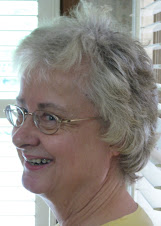I decided to see what would happen if I reversed the weft colors, weaving green where brown had originally been and vice versa. Note that I am still keeping the groups of blocks separated by blank green lines.


On the left, the treadling goes green, brown, green, brown…….repeat
On the right, the treadling goes brown, green,brown, green…..repeat.
Perhaps I can use this ability to reverse colors somehow in the actual weaving. But first will have to figure out how to make a smooth transition from green leading to brown leading.
COLOR AND WEAVING SOFTWARE
When I was preparing these drafts for the blog, I had the hardest time getting the colors right in my weaving software. It wasn’t that I wanted a particular green or brown. It is that I wanted the green and brown to be the same in each drawdown. I had tried to do this by eyeball/memory but that really was not working.
I finally realized that I could double-click on the brown in the left hand draft to raise the color information section and figure out the numbers for the color. There are two sets of numbers. The first set are the numbers for Hue, Saturation, and Luminescence. The second set are the numbers for Red, Green and Blue.
I wrote down the six numbers for the brown I used in the draft on the left. Then I went to the other draft, double-clicked on the brown, and yes, the numbers were different….. So I changed the numbers. Miracle of miracles, the right brown appears!
The greens, however, still look different. But all the numbers for the green are the same in both drafts. Perhaps it is the changed juxtaposition that affects the colors of the greens.
“Reversing the Weft Colors“ was written by Margaret Carpenter for Talking about Weaving and was originally posted on September 30, 2009. ©2009 Margaret Carpenter aka Peg in South Carolina.




























